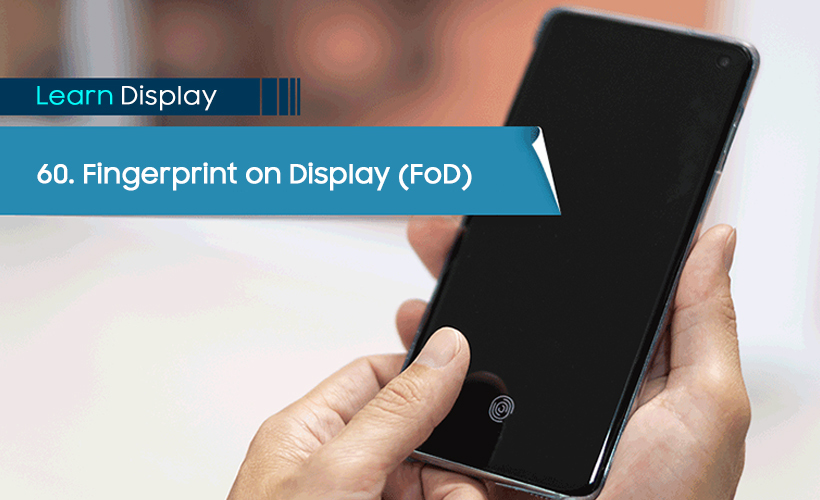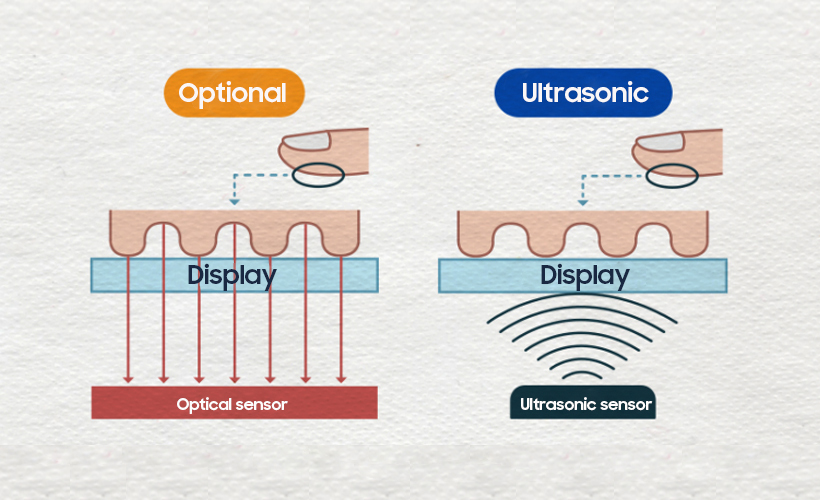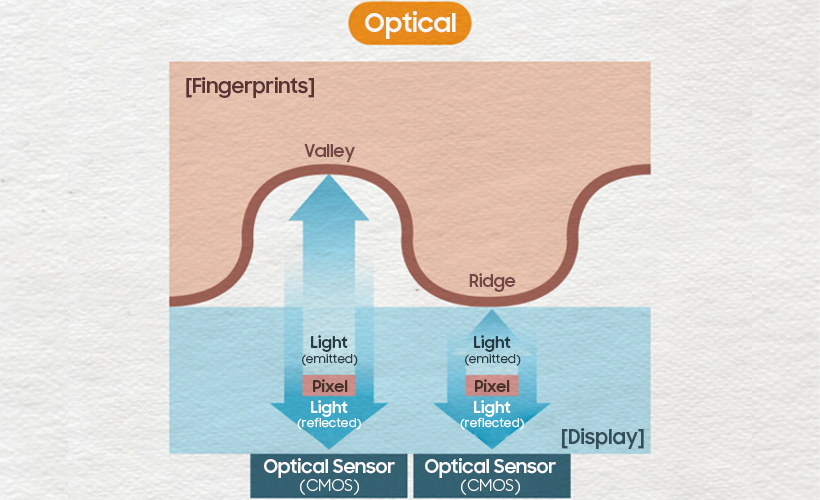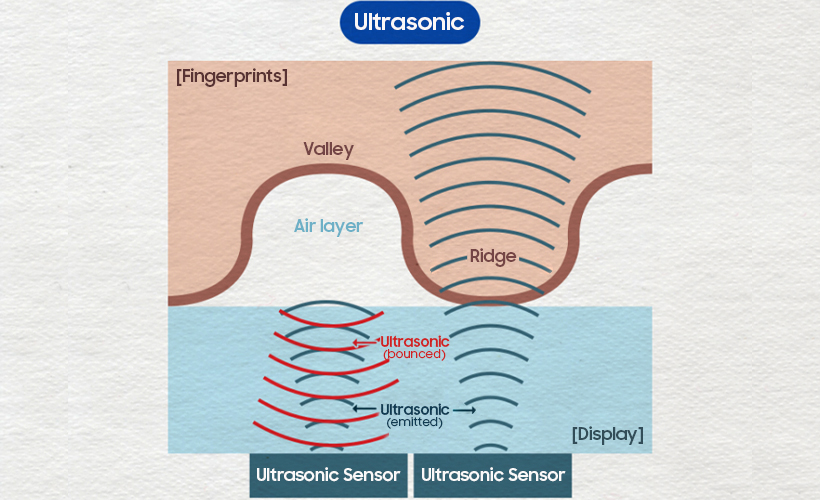
Fingerprint on Display (FoD) refers to the fingerprint scanner embedded in a display.
This technology allows a smartphone display to read the fingerprint of the user for authentication. The dominance of full-screen smartphones has resulted in the replacement of the physical button on the front of a smartphone with a FoD sensor. There are two types of FoD sensors most widely used today: Optical and Ultrasonic.

The Optical method reads the fingerprint in a similar way that a camera takes a photo.
A medium has a varying refractive index (describing the speed of light traveling through the material) depending on its density, and the optical in-display fingerprint sensor uses this principle. When the light emitted from the display reaches the fingerprint, the ‘ridge’ (the raised part of the fingerprint) will touch the display glass, while the ‘valley’ (the recessed part) will create an air layer between the glass and finger. The refractive index of air is different from that of glass, which leads the optical sensor to read the fingerprint using the difference in refractive indices.

The optical fingerprint sensor can be used on OLEDs as light can pass through the display. On the contrary, LCDs cannot be equipped with a fingerprint reader, at least theoretically, due to the backlight unit blocking the passage of light.
Another type of Fingerprint on Display technology is the Ultrasonic fingerprint scanner, which recognizes the undulations in a fingerprint.
Ultrasound, generated at the converter of the sensor, passes through the display and cover window to reach the fingerprint. These ultrasonic waves bounce back through the air layer underneath the ‘valley’, which lacks a medium, while the ‘ridge’ functions as a medium (skin) to absorb the ultrasonic waves. The in-display sensor measures the varying strengths of the ultrasonic signals, that are bounced back to the display, to read the fingerprint.

Because flexible OLEDs don’t have any air layer within, ultrasonic waves for fingerprint scans work. On the contrary, LCDs have an air layer where the backlight unit is placed, which prevents the ultrasonic waves from traveling and makes it unsuitable for ultrasonic fingerprint sensor applications.



